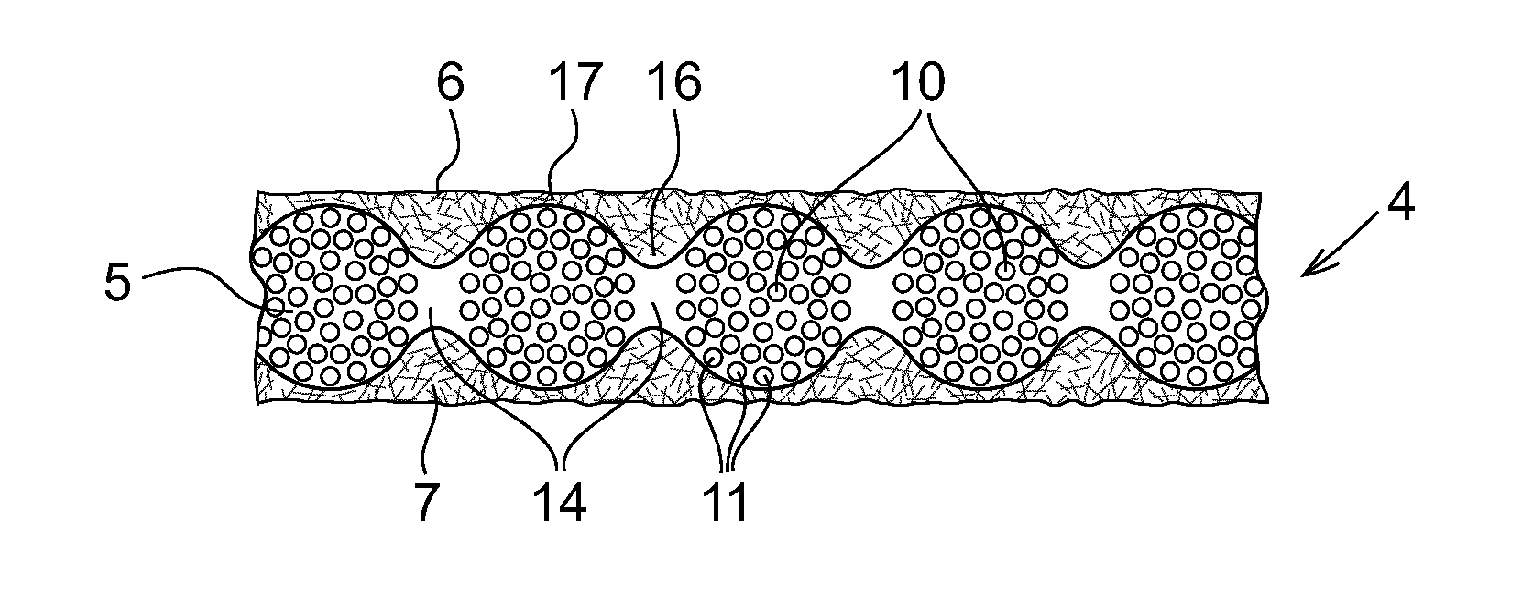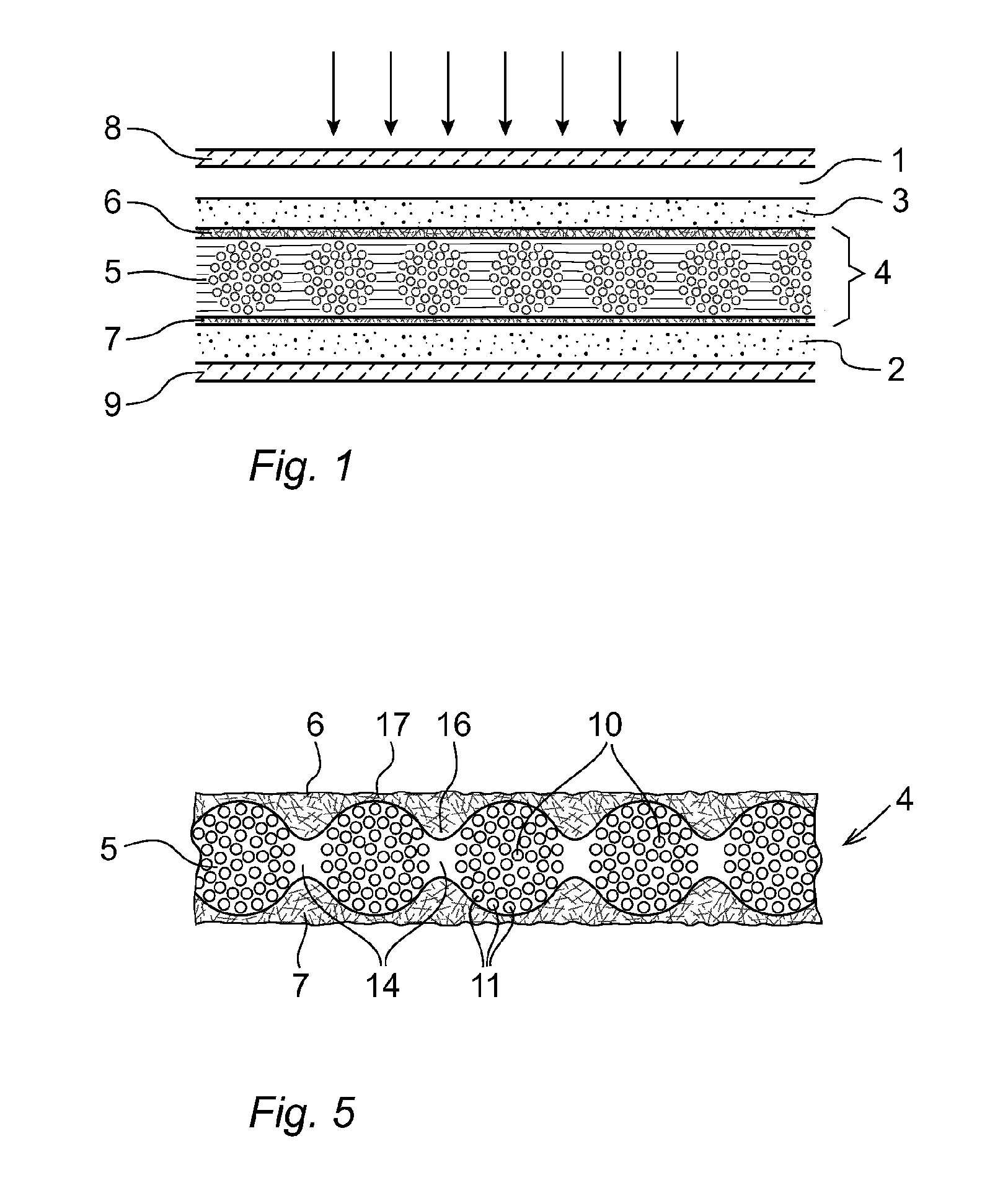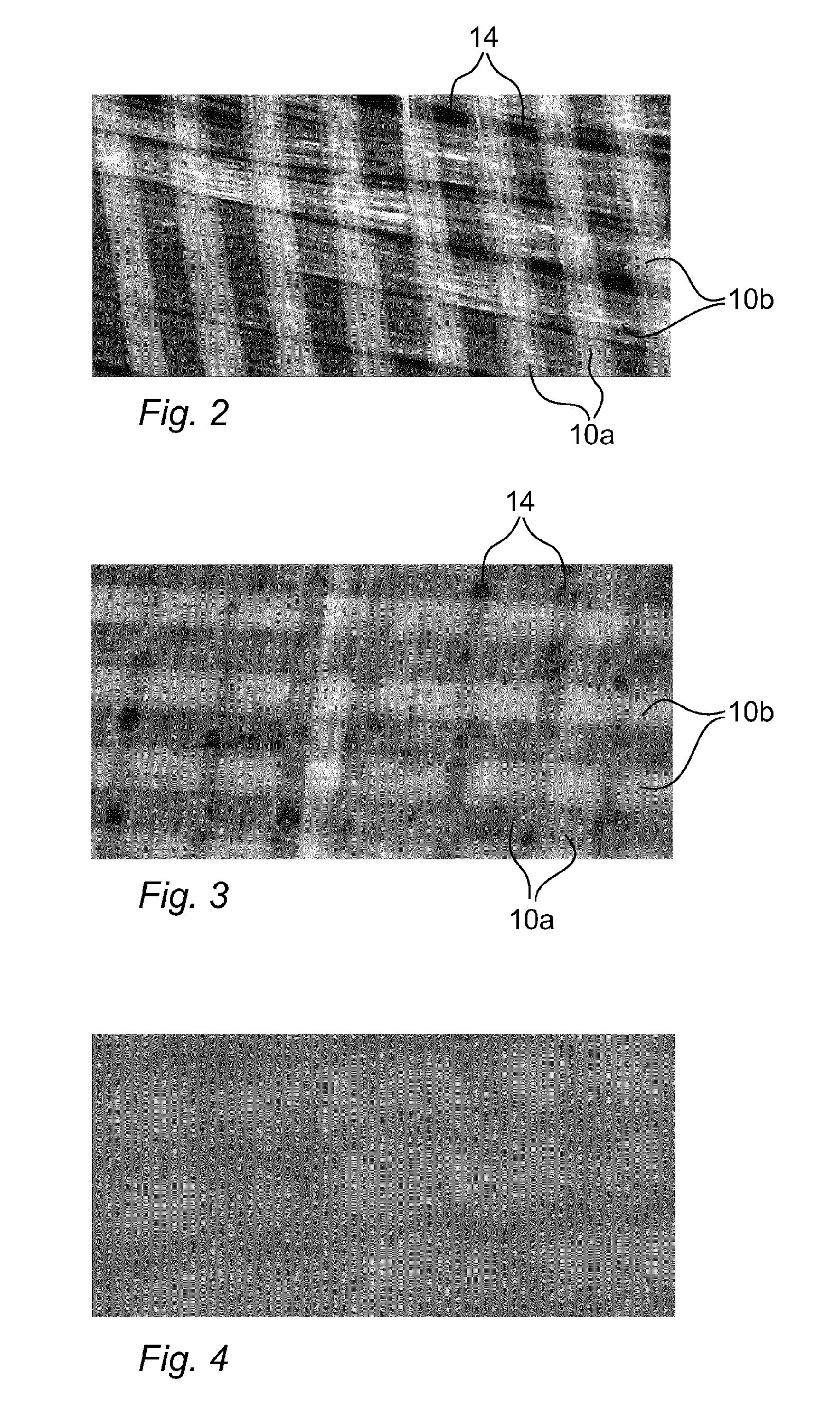Dye-sensitized solar cell including a porous insulation substrate and a method for producing the porous insulation substrate
a solar cell and dye-sensitive technology, applied in the field of dye-sensitive solar cells, can solve the problems of poor mechanical strength of the substrate, high demands on the porous insulation substrate, and unobtrusive environment, and achieve the effects of reducing the amount of fiber added, and enhancing the binding of non-woven fibers
- Summary
- Abstract
- Description
- Claims
- Application Information
AI Technical Summary
Benefits of technology
Problems solved by technology
Method used
Image
Examples
example 1
[0065]In the following an example of a method for producing the porous substrate shown in FIG. 4 will be described. A 15 μm thin glass fabric (Asahi Kasei E-materials), as shown in FIG. 2, with 50 filaments, with a filament diameter of 4 μm, was laid on top of a stainless steel wire screen (33 cm×33 cm) in a hand sheet former and a stock cylinder was put on top of the glass fabric and then closed and tightened. A glass microfiber stock solution was prepared by mixing 4000 grams of distilled water and 8 grams of glass microfibers (Johns Manville, special purpose type glass microfiber type 90, fiber diameter: 0.2 μm) and 400 grams of water based colloidal silica (a solution containing around 15 wt. % SiO2 in water) such that the final silica concentration was 1.4 wt. %. The mixing was performed using an Ultraturrax batch dispenser. The stock cylinder of the hand sheet former machine was filled with distilled water (containing 1.4 wt. % silica) up to a level of 350 mm above the surface...
example 2
[0066]A variation of Example 1 is that the microfiber stock solution is prepared by mixing 4000 grams of distilled water and 200 grams of nanocellulose dispersion (water based nanocellulose dispersion containing 2% by weight of nanocellulose) and 400 grams of water based colloidal silica (a solution containing 15 wt. % SiO2 in water). Thus, the ceramic glass microfibers in the microfiber stock solution are replaced by organic microfibers consisting of nanocellulose. Using nano-cellulose simplifies the manufacturing process in that dipping can be used instead of using a paper manufacturing process.
example 3
[0067]Another variation of example 1 is that the microfiber stock solution is prepared by mixing 4000 grams of distilled water and 2 grams of glass microfibers (Johns Manville, special purpose type glass microfiber type 90, fiber diameter: 0.2 μm) and 200 grams of nanocellulose dispersion (water based nanocellulose dispersion containing 2% by weight of nanocellulose) and 400 grams of water based colloidal silica (a solution containing 15 wt. % SiO2 in water). Thus, both organic microfibers consisting of nanocellulose and ceramic microfibers consisting of glass are used in the microfiber stock solution. After the porous insulation substrate has been dried, ink with conductive particles is deposited on at least one side of the substrate on top of the layer of non-woven microfibers, to form a porous conducting layer on the porous insulation substrate. If a monolithic DCS module is to be manufactured, the ink is deposited on both sides of the substrate on top the layers of non-woven mic...
PUM
| Property | Measurement | Unit |
|---|---|---|
| temperatures | aaaaa | aaaaa |
| temperatures | aaaaa | aaaaa |
| temperatures | aaaaa | aaaaa |
Abstract
Description
Claims
Application Information
 Login to View More
Login to View More - R&D
- Intellectual Property
- Life Sciences
- Materials
- Tech Scout
- Unparalleled Data Quality
- Higher Quality Content
- 60% Fewer Hallucinations
Browse by: Latest US Patents, China's latest patents, Technical Efficacy Thesaurus, Application Domain, Technology Topic, Popular Technical Reports.
© 2025 PatSnap. All rights reserved.Legal|Privacy policy|Modern Slavery Act Transparency Statement|Sitemap|About US| Contact US: help@patsnap.com



